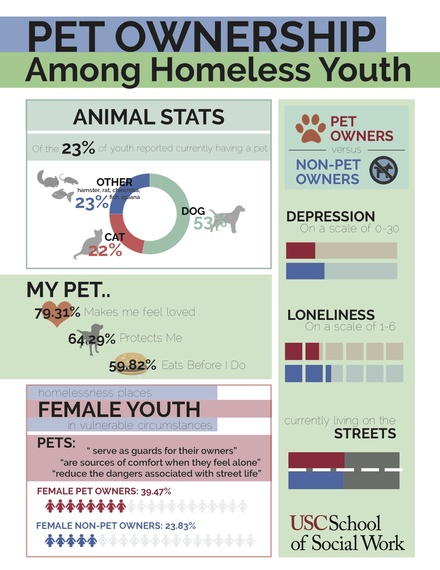A few weeks back I was at a drop-in center for homeless youth and I observed the following between a homeless youth and his dog.
"Nina, sit." Dog sat.
"Nina, down." She flattened to her belly.
"Nina, crawl." She scooted forward a few feet on her belly.
"Nina, shake." Nina popped up and shook Sam's hand with her left paw.
"Nina, other paw shake." Right hand shake.
"Good girl, Nina!!"
I turned to my student Amanda who owns three dogs and said, "My dog could never do that."
"None of mine can," was her emphatic reply.
In my experience, dogs owned by homeless youth are among the most well-loved and by far the best behaved I have ever known. I find it sad that many people harass youth about their pets, saying things like "How dare you own a dog if you are homeless. You can't possibly care for that poor animal."
The reality of homeless youth and their pets is something most people fail to understand. Pets of any kind provide these youth with a sense of belonging in a world that ignores or despises them. Dogs, in particular, help protect these youth from the many predators on the streets who try to victimize youth who have no safe place to go at night.
I want to take a moment to share some important facts about pet ownership on the streets to help dispel some misperceptions. My research team recently surveyed 332 homeless youth in Los Angeles about their experiences of owning pets. The results have published by the journal Child Psychiatry and Human Development.
About one-quarter of homeless youth own a pet and about half or those pets are dogs. More girls own pets than boys. One-third of the girls we surveyed said they had a pet. In part, this is because girls are in greater need of protection on the streets.
It is important to understand that for homeless youth, just like the rest of us, taking care of a pet is a top priority. Sixty percent of the youth we surveyed said their pet eats before they do. And only 10% said they struggled to keep their pet fed.
What do these pets provide to these youth? Well, 85% said their pet kept them company. Seventy-nine percent said their pet made them feel loved. And 64% said their pet protected them. The youth who owned pets felt less lonely and less depressed than the youth who did not own a pet. And how different is that from the rest of us? Don't all of our pets make us feel loved and help many of us feel safer?
Unfortunately, the story of owning a pet as a homeless youth is not all good. About a fifth of the youth we surveyed reported that strangers harass them because of their pets. Only one-third said they had easy access to veterinary care. And perhaps most troubling, 50% of the youth said owning their pet made it harder for them to stay in homeless shelters.
As someone who loves animals and who loves homeless youth, I have a simple ask. It is not an easy ask, but it is simple. We need to increase the access for homeless youth who have pets. Very few shelters allow a youth to have their pet with them. Many transitional living programs and long-term housing programs also ban pets. Just like anyone, these youth love and need their companions and we need to make allowances for the youth who have them.
Most of these youth have lost too much already. Don't make them give up their pet too.


